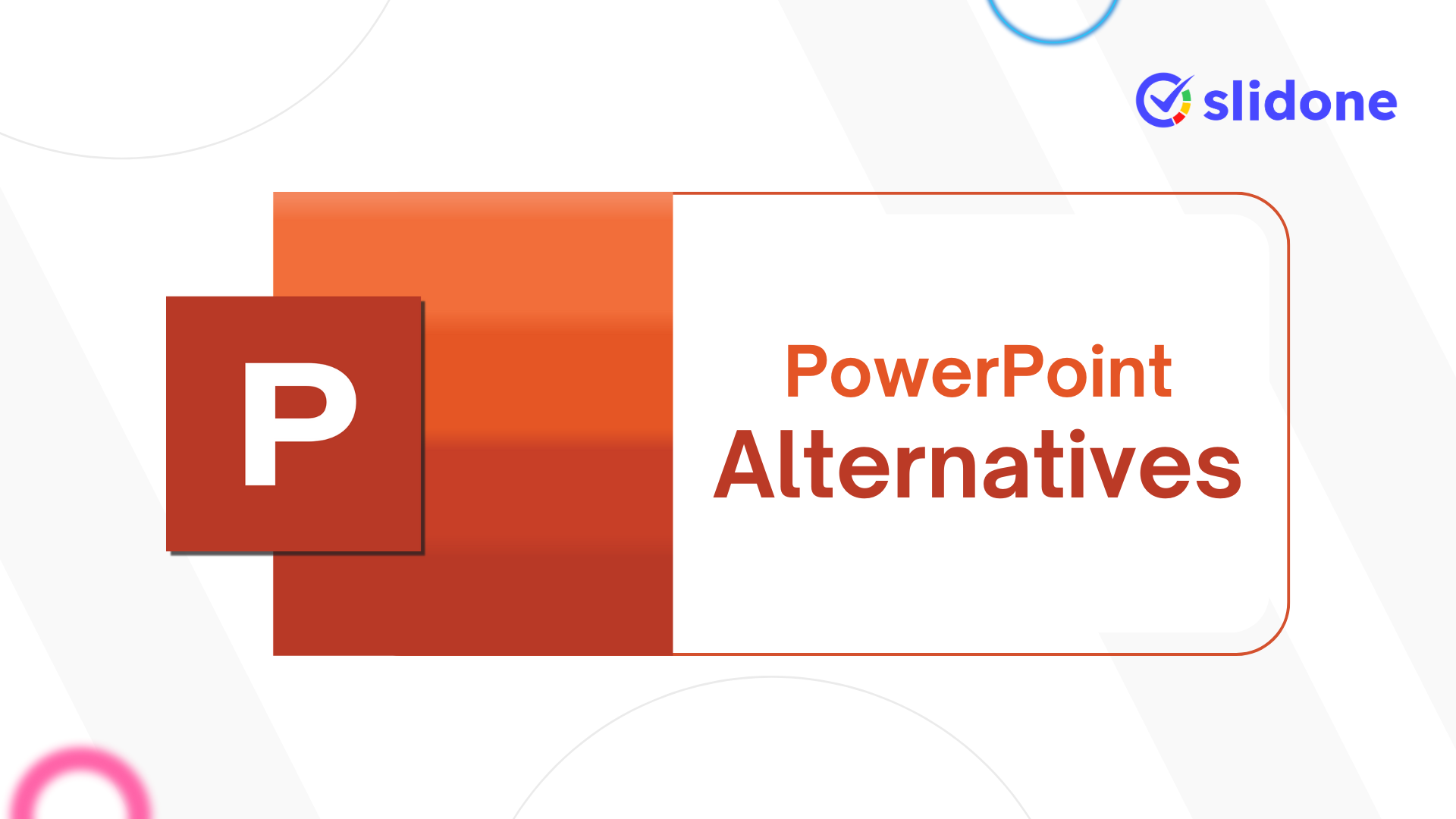Employee feedback is essential to creating a positive workplace culture. and guarantee the success of the organization. With the advent of technology, businesses can use online tools to streamline feedback collection and improve engagement. By combining features such as presentation integration software, these tools make the process interactive, powerful and profound.
In this blog, we’ll dive into what employee feedback means, why is it important? and the best tools available in 2025 to help you build a culture of feedback.
What is Employee Feedback?
Employee feedback refers to the exchange of information between employees and management regarding job performance, work experience and company policy. It serves as a two-way communication channel where employees can share their concerns, ideas, or beliefs, and management can provide constructive insights for improvement.
Feedback can come in many forms:
Formal feedback: Performance reviews or structured surveys.
Informal feedback: Casual conversations or impromptu meetings.
Peer-to-peer feedback: Colleagues providing input to one another.
Self-assessment: Employees reflecting on their own performance.
At its core, feedback is about fostering understanding, collaboration, and growth.
Why Is Employee Feedback Important?
Employee opinions play an important role in determining the dynamics and performance of an organization. Here’s why:
1. Drives Employee Engagement
Feedback helps employees feel connected to the organization. When employees know that their opinions are valued, they tend to be more engaged and motivated.
2. Encourages Personal and Professional Growth
Constructive feedback highlights areas for improvement and helps employees hone their skills. Increase confidence and performance
3. Improves Organizational Alignment
Feedback ensures everyone in the organization is on the same page about goals, values, and expectations.
4. Enhances Retention Rates
Employees who feel heard are less likely to resign. Providing regular feedback helps address concerns early on. to prevent corrosion
5. Builds a Culture of Transparency
Open feedback promotes trust between employees and management. Leads to a more cohesive workplace environment.
How Employee Feedback Impacts Workplace Culture?
A workplace culture that is rich in feedback creates a positive and productive environment. How does the following affect culture?
1. Fosters Inclusivity
Employees feel a sense of ownership when their ideas and suggestions are considered in the decision-making process.
2. Enhances Collaboration
Frequent feedback promotes better communication between teams. Make collaboration smoother and more efficient
3. Encourages Innovation
Employees are more likely to share creative ideas and solutions. When they feel safe expressing their ideas
4. Reduces Conflict
Addressing issues through feedback helps prevent misunderstandings and helps resolve conflicts before they escalate.
5. Promotes Accountability
Regular feedback sessions help keep employees accountable for their actions and performance. This results in employees having more responsibility.
What Are Employee Feedback Tools?
The Employee Feedback Tool is a digital platform designed to simplify and improve the process of collecting, analyzing, and acting on feedback. These tools enable organizations to gather straightforward, actionable insights, along with saving time and effort.
Some key features of these tools include:
- Anonymous surveys to encourage candid responses.
- Real-time analytics to track trends and patterns.
- Integration with existing systems for a seamless experience.
- Customizable templates for tailored feedback collection.
By incorporating tools like interactive presentation software, these platforms also make feedback sessions engaging and interactive.
Best Employee Feedback Tools Online in 2025
1. Slidone
Slidone takes employee feedback to the next level by incorporating interactive elements into presentations. With features like live polls, quizzes, and word clouds, Slidone ensures feedback sessions are engaging and dynamic.
Key Features
- Real-time response collection.
- Customizable slide templates for various feedback needs.
- Presentation integration software for seamless communication.
Best For
Organizations looking to combine interactive feedback with impactful presentations.
2. SurveyMonkey
SurveyMonkey is a trusted name in feedback collection, offering robust survey creation tools for organizations of all sizes.
Key Features
- Pre-built survey templates for various purposes.
- Advanced analytics for detailed insights.
- Integration with popular tools like Slack and Salesforce.
Best For
Businesses that need detailed feedback collection and analysis.
3. Officevibe
Officevibe focuses on improving employee engagement and fostering a strong workplace culture.
Key Features
- Pulse surveys for real-time insights.
- Anonymous feedback channels to encourage honesty.
- Actionable reports to guide improvements.
Best For
Teams looking to enhance their culture and engagement strategies.
4. 15Five
15Five emphasizes continuous feedback and performance management, helping organizations keep track of employee growth.
Key Features
- Weekly check-ins for ongoing feedback.
- Goal tracking to align individual and team objectives.
- One-on-one tools for meaningful conversations.
Best For
Organizations focused on performance-driven feedback.
5. Culture Amp
Culture Amp offers a comprehensive solution for employee engagement, development, and feedback.
Key Features
- Detailed engagement surveys.
- Leadership insights and coaching tools.
- Customizable reports for data-driven decisions.
Best For
Large organizations aiming for deep employee development and engagement.
Key Features To Consider In An Employee Feedback Tool
Keep these features in mind when choosing the right tool:
User-friendly interface: The simple design makes it easy for anyone to use.
Customizable templates: Customized surveys and forms make collecting feedback more relevant.
Real-time analytics: Instant results help make faster decisions.
Anonymity Options: Employees are more likely to share their honest opinions when their anonymity is guaranteed.
Scalability: Choose tools that grow with your organization.
Benefits Of Using Employee Feedback Software
Improve communication: Feedback tools simplify the process of gathering and sharing insights.
Save time: Collect feedback automatically. Reduce manual effort.
Promote honest information: Anonymous surveys make employees feel safe to share their ideas.
Improve morale: Employees appreciate listening. Leads to greater satisfaction.
Supports data-driven decision making: Analytics provides valuable insights to drive strategic initiatives.
How To Choose The Best Employee Feedback Tool For Your Organization?
Define your goals: Understand whether you need tools to improve engagement, performance, or culture.
Trial feature: Use the free trial to explore the functionality before deciding.
Gather employee data: Involve your team in the decision-making process to ensure the tools meet their needs.
Consider integration: Make sure the tool works seamlessly with your existing systems, such as HR software or communications platforms.
Check reviews: Find testimonials and feedback from other users to make an informed decision.
Conclusion
Employee feedback tools are essential to creating a transparent, inclusive, and productive workplace. With options like Slidone, SurveyMonkey, and Officevibe, you can find a solution to suit your organization’s unique needs.
These tools not only make the feedback process easier; But it also fosters a culture of collaboration and continuous improvement. Whether through live polls, anonymous surveys or custom report feedback tools help organizations listen, adapt, and grow.
Start your journey with Slidone today and discover how presentation integration software can make your feedback sessions more interactive and effective. Empower your team, increase communication and build a strong workplace culture—one feedback session at a time!





Leave a Comment
Your email address will not be published. Required fields are marked *